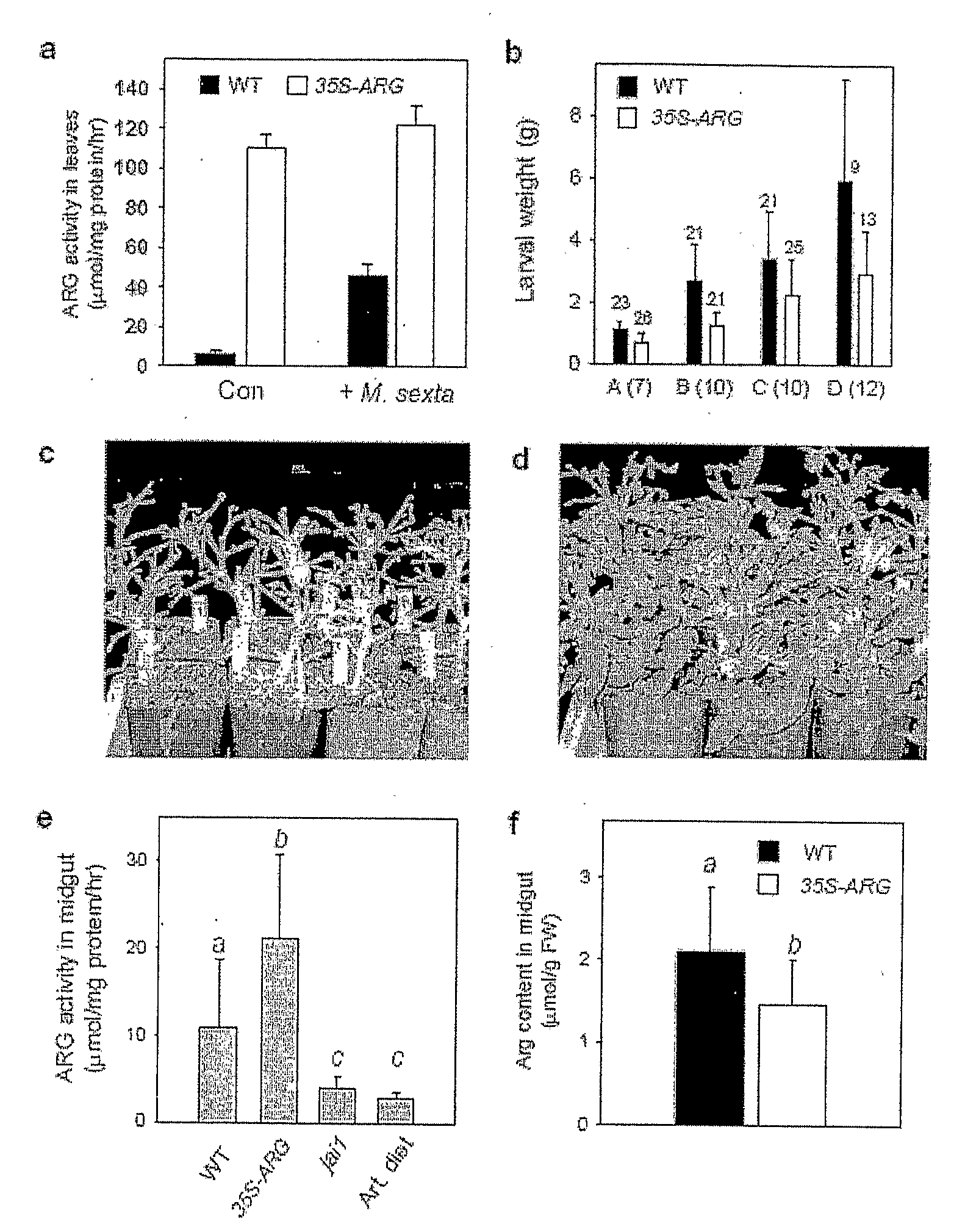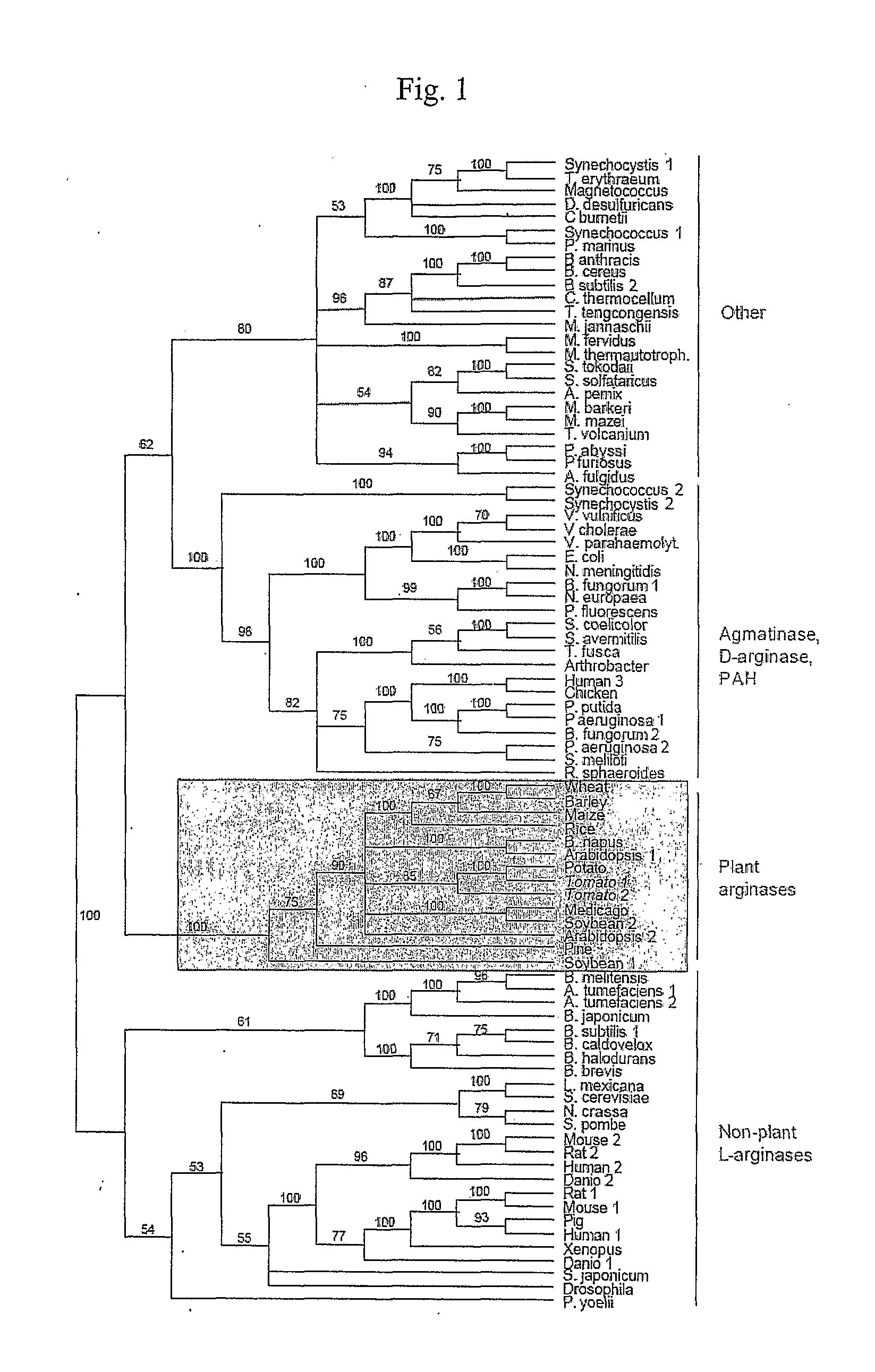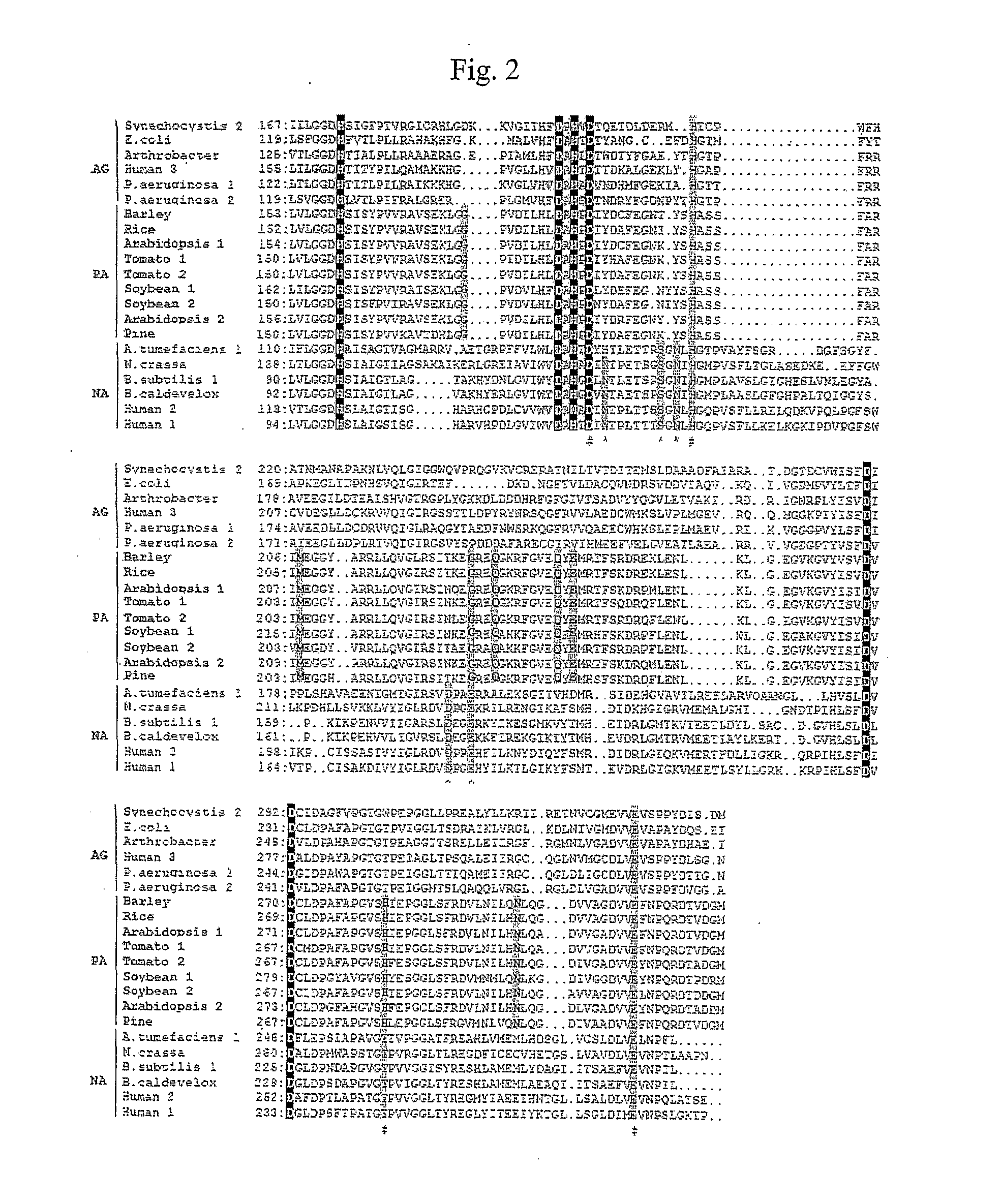Protection against herbivores
a technology for herbivores and weeds, applied in the field of herbivore protection, can solve the problems of broad-spectrum toxicity of plants, potential poisoning of non-target insects, fish, wildlife, etc., and achieve the effect of reducing the infestation of plants
- Summary
- Abstract
- Description
- Claims
- Application Information
AI Technical Summary
Benefits of technology
Problems solved by technology
Method used
Image
Examples
example 1
Materials and Methods
[0312]Plant Material and Treatments—Tomato (Lycopersicon esculentum cv. Castlemart) plants were grown in Jiffy peat pots (Hummert International) in a growth chamber maintained under 17 h of light (200 μE m−2 s−1) at 28° C. and 7 h of dark at 18° C. Seed for the sterile jail-1 mutant was obtained from a segregating population as described by Li et al. (Li et al., Plant Physiol: 127:1414-1417 (2001)). Flowers and fruits were harvested from plants maintained in a greenhouse. For experiments involving MeJA treatment, forty three-week-old plants were placed in a closed Lucite box (31 cm×27 cm×14 cm) and treated with 2 μl of pure MeJA (Bedoukian Research) dissolved in 300 μl of ethanol, as previously described (Li et al., Plant Mol. Biol. 46:409-419 (2001)). A hemostat was used to inflict mechanical wounds near the distal end of leaflet, perpendicular to the midvein. Zhao et al. (Zhao et al., Plant J. 36:485-499 (2003)) described the source of coronatine (COR) and app...
example 2
[0319]Phylogenetic tree of the arginase superfamily. A mid-point rooted neighbor-joining phylogeny was constructed with 85 amidinohydrolase sequences from diverse organisms. Neighbor-joining bootstrap replicates were run to test the branching order reliability. Accession numbers are listed in the legend to FIG. 9A-9J, herein incorporated by reference. The four major sub-groups of the phylogeny are indicated on the right, with plant arginases in the shaded box. PAH, proclavaminate amidino hydrolase.
example 3
[0320]Comparison of cDNA-deduced protein sequences of arginases. Members of arginase superfamily from FIG. 1 were globally aligned with the PILEUP program in GCG (Wisconsin Package version 10.2, Genetics Computer Group (GCG), Madison, Wis.). The active site region of a subset of agmatinase (AG), plant L-arginase (PA, bold) and non-plant L-arginase (NA) groups are shown. Alignment of 85 full-length sequences is shown in FIG. 9. Amino acid residues involved in binding the Mn2+ cofactor are shaded in black; they are conserved in members of the arginase family. Residues in non-plant L-arginases that are involved in binding the guanidino moiety of the substrate are denoted with the “#” symbol and are shaded. Residues in non-plant arginases that form hydrogen bonds with the α-carboxylate oxygen and the α-amino group of L-arginine are denoted by the “*” and “̂” symbols, respectively, and are shaded in gray. “Plant-specific” residues conserved in plant arginases, but not found in other fami...
PUM
| Property | Measurement | Unit |
|---|---|---|
| acid degradation | aaaaa | aaaaa |
| insect resistance | aaaaa | aaaaa |
| nucleic acid sequence | aaaaa | aaaaa |
Abstract
Description
Claims
Application Information
 Login to View More
Login to View More - R&D
- Intellectual Property
- Life Sciences
- Materials
- Tech Scout
- Unparalleled Data Quality
- Higher Quality Content
- 60% Fewer Hallucinations
Browse by: Latest US Patents, China's latest patents, Technical Efficacy Thesaurus, Application Domain, Technology Topic, Popular Technical Reports.
© 2025 PatSnap. All rights reserved.Legal|Privacy policy|Modern Slavery Act Transparency Statement|Sitemap|About US| Contact US: help@patsnap.com



